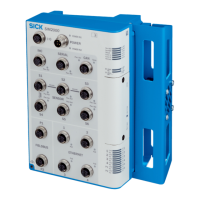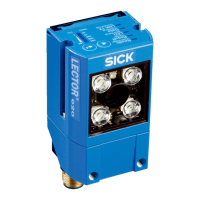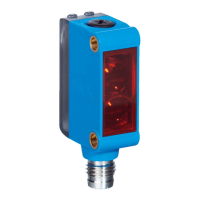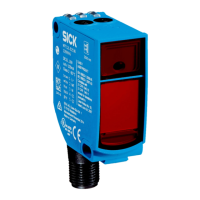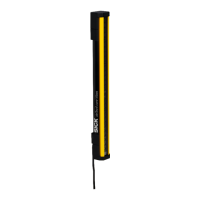Figure 17: Orthogonal approach to the optical axis, example 2
Parallel approach to the optical axis
W
hen approaching parallel to the optical axis, a person enters the protective field at the
further end. The person walks towards the camera system.
Depending on the application and the selected object resolution, larger allowances are
required for an approach direction parallel to the optical axis. For example, if a person
enters the protective field with an outstretched arm, the camera system sees the entire
length of the arm when approaching orthogonally. When approaching parallel to the
optical axis, the camera system sees only the fingertips or the arm diameter. A larger
allowance is therefore necessary when calculating the minimum distance.
Figure 18: Parallel approach to the optical axis
4.3.9 Minimum distance for stationary applications
Overview
T
he protective field must be designed to recognize a person at the latest when he or
she reaches the minimum distance from the hazardous point. The minimum distance
means that the dangerous state can be ended in good time before the person reaches
the hazardous point.
Minimum distance for stationary applications
T
he calculation of the minimum distance is based on international or national stand‐
ards and statutory requirements applicable at the place of installation of the machine.
If the minimum distance is calculated according to ISO 13855, then it depends on the
following points:
•
Machine stopping time (time interval between triggering the sensor function and
the end of the machine’s dangerous state, if necessary including signal propaga‐
tion times in the network and processing time in the controller)
•
Response time of the protective device
•
Reach or approach speed of the person
4 P
ROJECT PLANNING
28
O P E R A T I N G I N S T R U C T I O N S | safeVisionary2 8025919/1I9E/2023-01-09 | SICK
Subject to change without notice
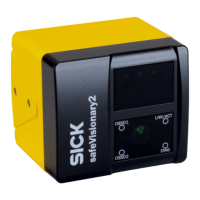
